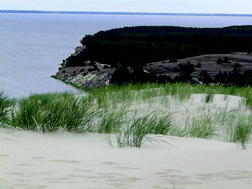Characteristics of black carbon aerosol mass concentration over the East Baltic region from two-year measurements
Abstract
Continuous measurements of black carbon (BC) aerosol mass concentration were performed at a background site Preila (55°55′N, 21°00′E, 5 m a.s.l., Lithuania) during the period 2008–2009. The data were used to characterize the BC mass concentration distribution over the East Baltic region. High increase in aerosol BC concentration was associated with the change in air mass characteristics and biomass
Temporal evolution and transport of BC aerosols were interpreted by the air mass backward trajectory analysis in conjunction with the examination of the wavelength dependence on the aethalometer data. Air masses originated from the North Atlantic Ocean and Scandinavia were favourable for lower BC concentrations (350 ng m−3), while the BC level associated with the Western Europe airflows was significantly higher (970 ng m−3). The mean values of Ångström exponent of the absorption coefficient (monthly means 1.45 ± 0.25 and 0.84 ± 0.50 over January and June, respectively) revealed that the BC concentration observed over the East Baltic is influenced by submicron sized particles as a result of incomplete biomass


 Please wait while we load your content...
Please wait while we load your content...